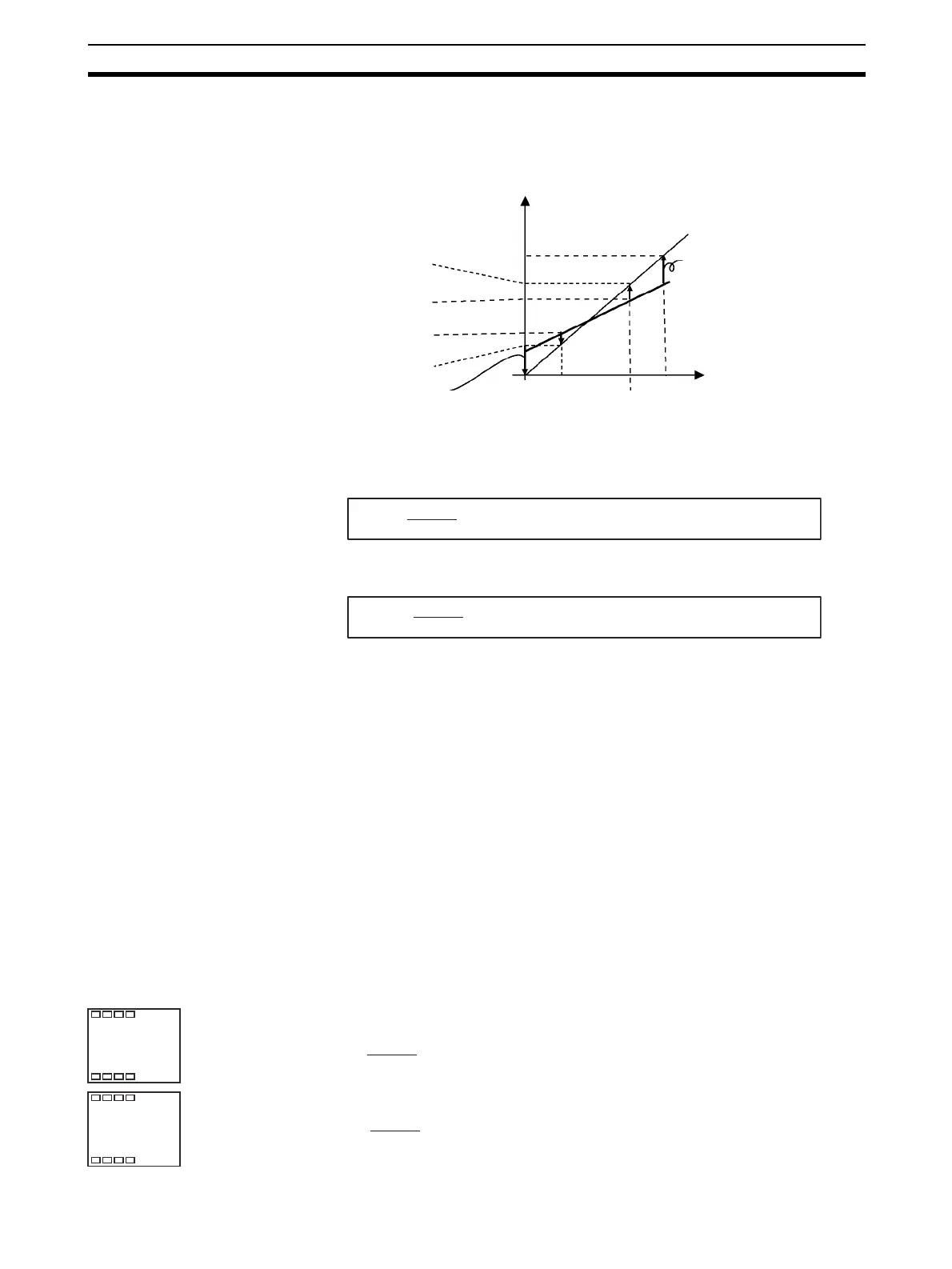55
Shifting Input Values Section 4-1
2. Using equations (1) and (2) calculate the upper- and lower-limit tempera-
ture input shift values from the readout and temperature to be shifted that
you obtained in step 1.
Figure 3 shows the effect of shift by two-point temperature input shift.
• Use the following equation to calculate the lower-limit temperature input
shift value.
• Use the following equation to calculate the upper-limit temperature input
shift value.
3. After you have set the calculated values to “insl” and “insh”, check con-
troller readout (A) and control target temperature (B).
4. Although the input shift was carried out at two points, close to room tem-
perature (ambient temperature), and near to the set point, select points
close to each end of the sensor range to improve accuracy across the full
range of the sensor measurement range.
Note Before selecting these values, check that they will not damage the
controller if applied.
4-1-5 Example of Two-point Temperature Input Shift
In this example, we use the ES1B K 0 to 260°C specification. In equations 1
and 2, the set temperature lower limit YL is 0
°C and the set temperature upper
limit YH is 260
°C. Check the temperature of the control target.
The temperature input offset values can be calculated as shown below when
the Controller readout Y1 is 40
°C for a room temperature X1 of 25°C and
when the Controller readout Y2 is 105
°C for a set point temperature X2 of
110
°C.
Lower-limit temperature input shift value
Upper-limit temperature input shift value
Figure 3 Two-point Temperature Input Shift
Controller readout (A)
Set temperature
upper limit YH
(e.g. 260°C)
Temperature readout
after input shift X2 (e.g. 110°C)
Temperature readout
before input shift Y2 (e.g. 105°C)
Temperature readout
before input shift Y1 (e.g. 40°C)
Temperature readout
after input shift X1 (e.g. 25°C)
Lower-limit temperature
input shift value
X1 room temperature
(e.g. 25°C)
Set temperature
lower limit YL (e.g. 0°C)
Near X2 set point (e.g. 110°C)
Temperature readout of
control target (B)
Before shift
Upper-limit temperature
input shift value
After shift
0
insl
= × {(X2 − Y2) − (X1 − Y1)} + (X1 − Y1)...equation 1
YL − Y1
Y2 − Y1
insh
= × {(X2 − Y2) − (X1 − Y1)} + (X1 − Y1)...equation 2
YH − Y1
Y2 − Y1
Lower-limit
temperature
input shift value
Adjustment level
Upper-limit
temperature
input shift value
in5l
-27
C
in5h
53
C
insl
= × {(110 − 105) − (25 − 40)} + (25 − 40) = −27.3 (°C)
0 − 40
105 − 40
insh
= × {(110 − 105) − (25 − 40)} + (25 − 40) = 52.7 (°C)
260 − 40
105 − 40
